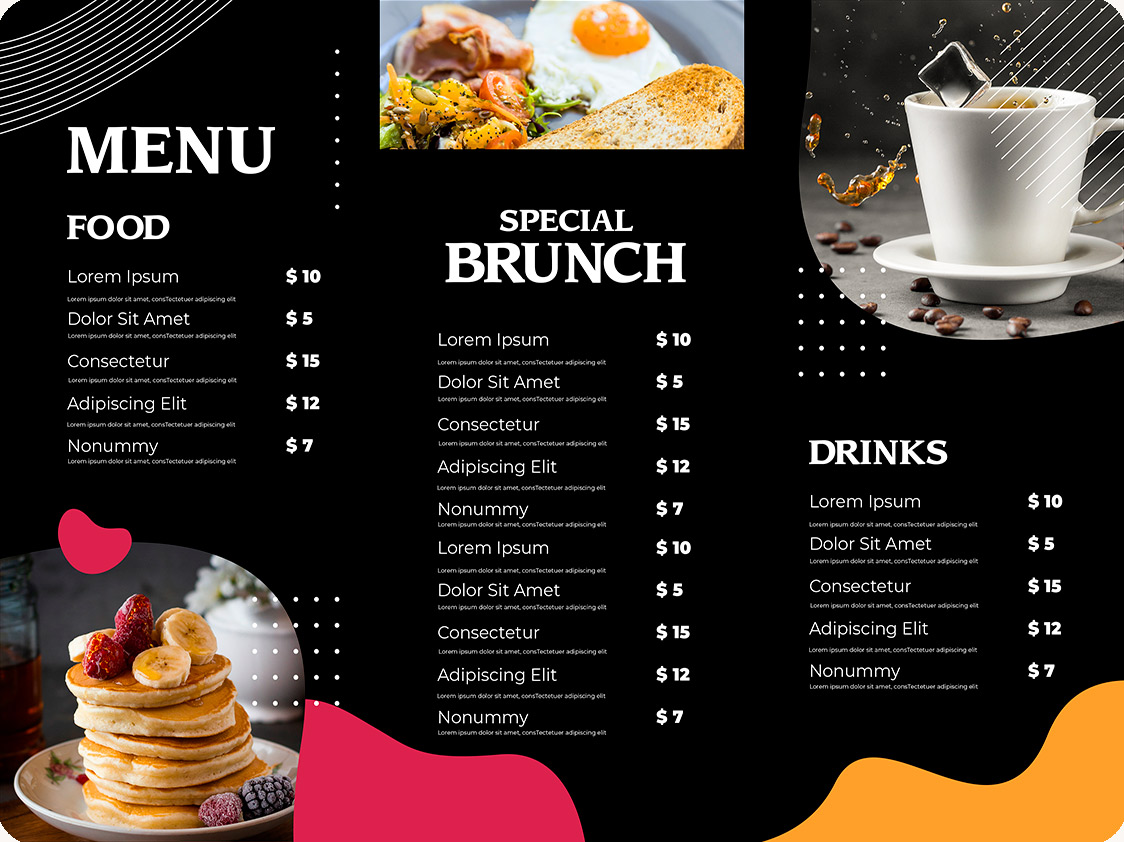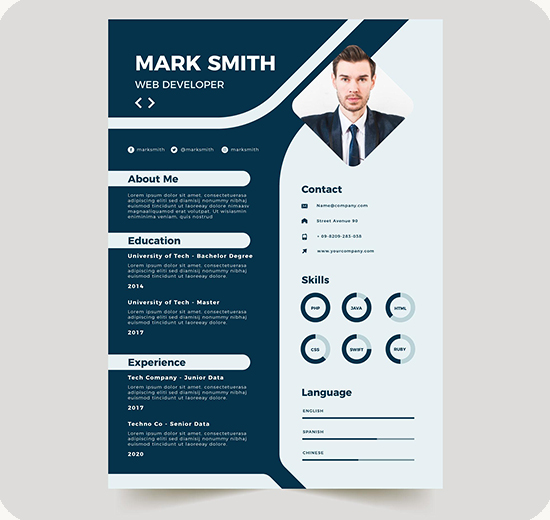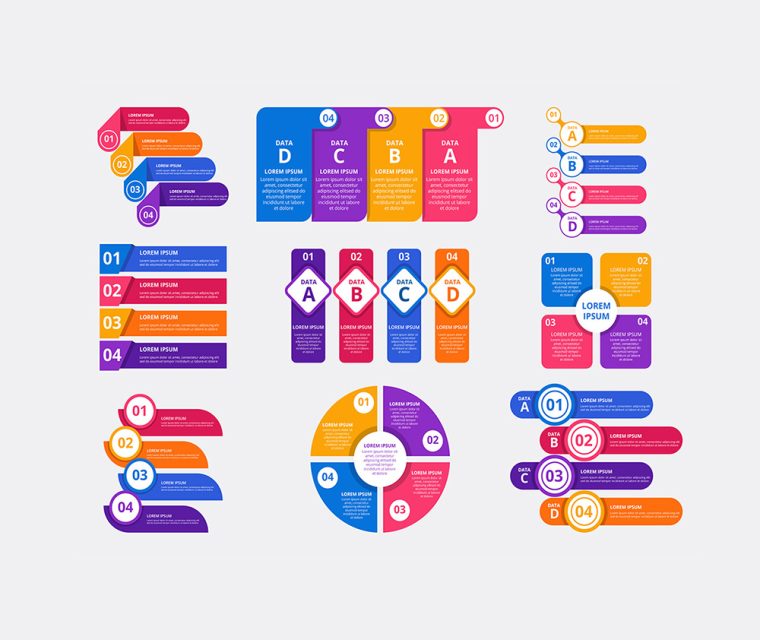
print design
Menu Design
Creating effective advertisements within a menu design demands a careful balance between being informative and not overwhelming the customer. Here are some key points to consider for optimal feedback:
- Placement:
- Strategic Positioning: Place ads where they are likely to be noticed, such as near popular items, headers, or categories.
- Visual Hierarchy: Ensure that the ad placement does not detract from the primary purpose of the menu—helping customers choose food.
- Design Elements:
- Color Scheme: Use colors that align with the overall theme of the menu but make the ad stand out slightly. Avoid clashing colors.
- Typography: Select fonts that are easy to read and consistent with the menu style. Highlight important information using bold or italics sparingly.
- Images: Use high-quality images to attract attention. Ensure they are relevant and appetizing to directly relate to the advertised item or promotion.
- Content:
- Brevity: Keep the text concise and to the point. Focus on the main benefits or unique selling points.
- Clear Call-to-Action (CTA): Include a persuasive CTA (e.g., “Try our new dessert!”, “Order now and get a free drink!”).
- Pricing: If relevant, include special pricing or discounts to entice customers.
- Relevance:
- Seasonal Offers: Promote items that are relevant to the season or current trends (e.g., holiday-themed dishes).
- Customer Preferences: Highlight popular dishes or chef’s specials that are frequently ordered.
- Interactivity (if applicable):
- QR Codes: Integrate QR codes that lead to more information, videos, or even interactive ordering options.
- Augmented Reality: For tech-savvy environments, consider AR elements that can be viewed through customer smartphones.
- Testing and Feedback:
- Trial Runs: Test different ad designs and placements to see which performs best among your customer base.
- Feedback Loop: Gather feedback from customers to understand what caught their attention and what didn’t.
- Consistency:
- Brand Identity: Ensure that the ads are consistent with your brand’s identity and promise. This builds trust and familiarity.
- Menu Flow: Ads should integrate seamlessly into the menu’s flow, not disrupt the reading experience.
- Legal and Ethical Considerations:
- Transparency: Be clear about any conditions or limitations of promotions.
- Compliance: Ensure that all advertising content complies with local advertising laws and regulations.
By paying attention to these points, you can design menu advertisements that effectively capture customer interest and drive desired actions without overshadowing the menu’s primary purpose.






